‘Eight yard house’: a sweet marriage of architecture and landscaping
‘We saw the architecture as a vehicle for the landscape,’ says the architect of this project. And it’s a treasure trove of great ideas.
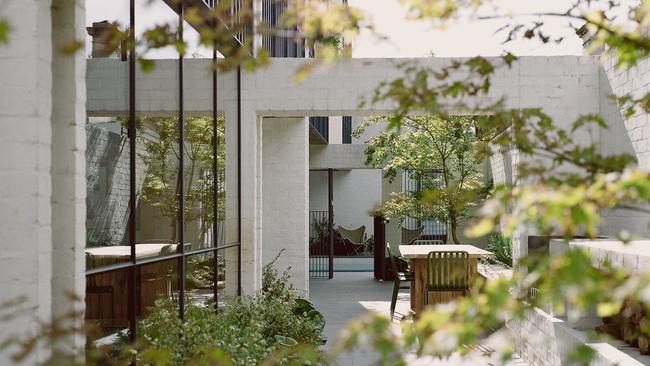
The moniker “Eight yard house” was inspired by its multiple garden spaces but arguably undersells the grace of this new home. Architect Mel Bright believes the whole project is defined by its gardens: “We saw the architecture as a vehicle for the landscape.”
The project, a new family home on a double-fronted site in Melbourne’s Fitzroy North, was designed by Studio Bright with soft landscaping by Fran Hale of landscape design studio Peachy Green. Completed in May last year, it has just won the Garden category of the 2021 Houses Awards, and is a finalist in several other architectural awards.
“Rather than have the house as one mass with one backyard, the indoor and outdoor spaces are distributed along the length of the site, punctuated by a series of outdoor courtyards,” explains Bright.
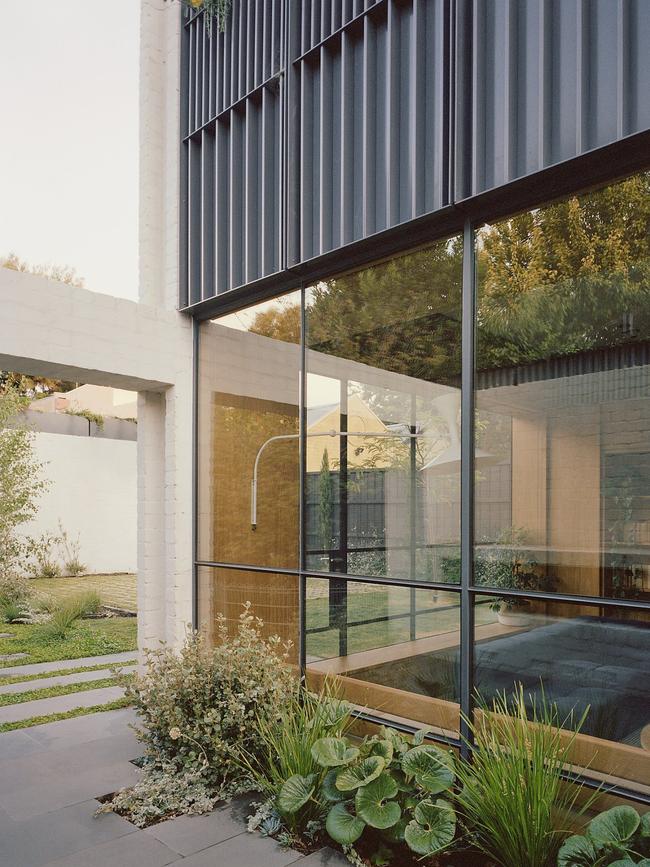
To create the light-filled spaces the clients wanted, she sited most of the building on the south side of the block, facing north. “A big move in the first instance was not to put the pool in the back yard but well forward in the plan – this totally freed up that rear space,” she explains. “Then we didn’t want to end up with a long, ‘cricket pitch’ garden so we started to break it up with smaller, layered garden rooms.”
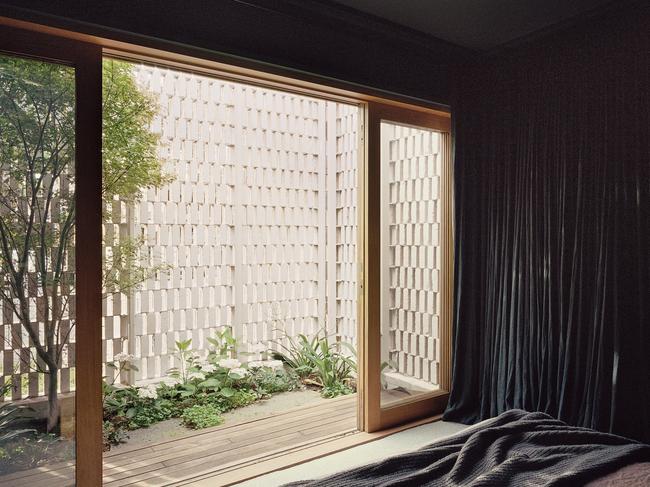
The petite front entry garden is filled with textural grasses and native daisy (Brachyscome multifida). Tucked behind a perforated brick screen facing the street is an intimate courtyard for the master bedroom, featuring a Japanese maple, white hydrangeas and renga lily (Arthropodium cirratum). There’s a layered lightwell garden, low-key plantings in the walled pool area, and a large courtyard with outdoor entertaining facilities, herbs, a Japanese maple for summer shade and interesting foliage plants such as tractor seat (Ligularia reniformis).
In the back garden, silver birches (Betula pendula ‘Moss White’) are a key element. “The clients had always dreamt of having a silver birch woodland,” says Hale, who also incorporated hydrangeas – both mop-heads and oak-leaved – at their request. Strips of mixed-width local bluestone, lushly infilled with kidney weed (Dichondra repens), form a wide path to the rear studio. Plantings include native Correa alba, silver licorice plant (Helichrysum petiolare) and Lomandra ‘Lime Wave’. Next to a modest lawn, there’s a grasscrete area for basketball, and star jasmine and Virginia creeper clothe the fences.
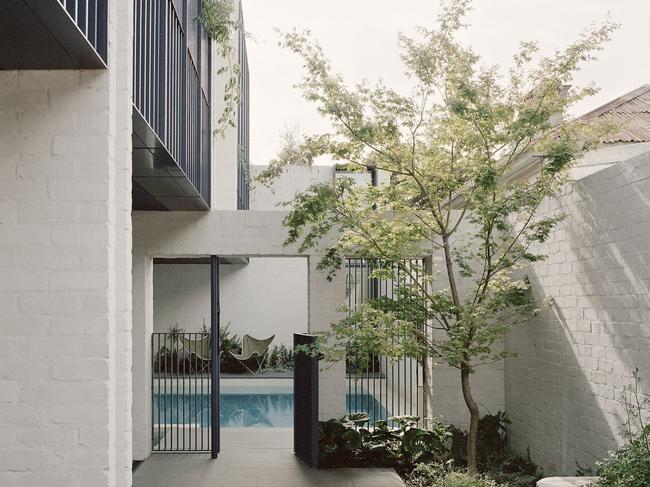
Integral to the home’s design is an aluminium screen running the full length of the upstairs bedrooms, providing privacy and shade. At its base are irrigated planter boxes to support climbers such as white bower vine (Pandorea ‘Lady Di’) and fragrant Stephanotis floribunda that will grow out, up and down in order to soften that façade. On the rooftop terrace with city views is a potted garden featuring potted citrus, olives and bougainvillea.
“It’s a cohesive planting palette from front to back,” says Hale. “It’s an eclectic mix but things are repeated throughout. Even though they’re fairly small spaces we were able to achieve a lush and verdant feel. You’re surrounded by garden wherever you are in the house, so it feels like a sanctuary.”
Adds Bright: “It looks good now, but soon it’ll be dripping in foliage to make a series of beautifully embedded garden rooms.”
Q&A
Moss is infiltrating large tracts of my lawn, especially beneath trees. While it makes green velvet carpets in winter, it browns and dies in our summer heat, leaving dirt where grass seed won’t take. Any advice? Shane Byrne, Albury, NSW
Moss indicates shade, acidic soil, compaction and associated waterlogging – all conditions that turf grasses don’t like. Selective tree pruning might increase sunlight and you can de-compact the soil with a fork. Improving drainage is more complex but gypsum can improve some clays. Counteract acidity with garden lime to achieve a soil pH around 7. Most grass seeds are for cool-season grasses that die off in hot summers anyway. You’d need to lay softleaf buffalo turf rolls. Otherwise, consider turning this area into garden bed or a perhaps a gravelled spot, adding seats and potted plants.
Our lillypilly (Syzygium jambos) hedge has myrtle rust. Is there an effective treatment? John MacDonald, Wollongong, NSW
This species is particularly susceptible to myrtle rust. NSW DPI recommends removal, ideally after spraying with fungicide (Yates Zaleton). Place the bits in black plastic bags and leave in the sun for several weeks to kill spores. Do not compost or send to green waste.
How hard can we prune our hedge of gardenias beneath lillypilly standards? What is the best fertiliser for both? Arthur Jones, Culburra Beach, NSW
Ideally, prune gardenias lightly in early August each year. They tolerate harder pruning if needed but take time to recover. Organic-based fertilisers for acid-loving plants include Neutrog’s Kahoona and Osmocote Plus Organics Roses, Gardenias and Azaleas. Compost is an excellent addition.
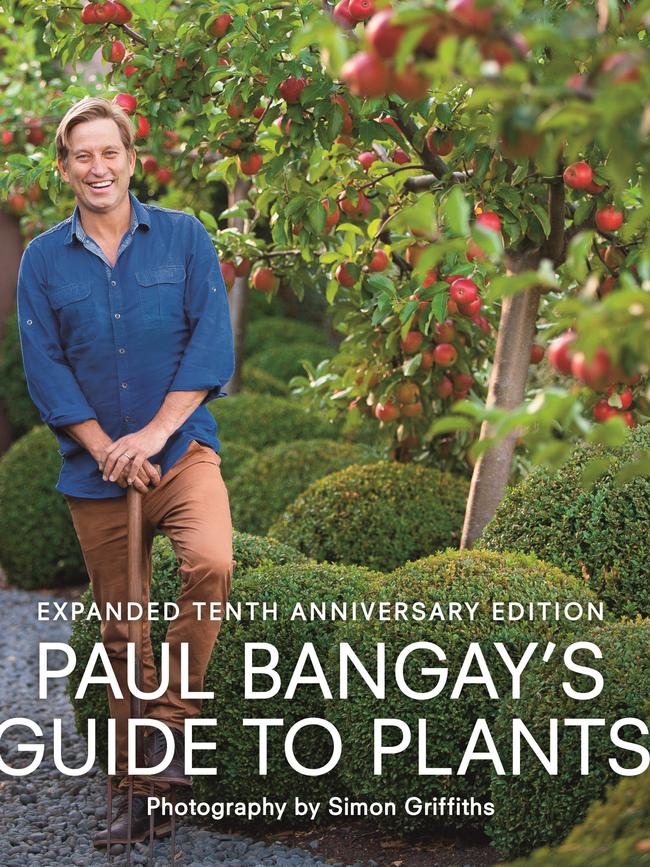
Send your questions to: helenyoungtwig@gmail.com or Helen Young, PO Box 3098, Willoughby North, NSW 2068. The best question for August wins the newly released Paul Bangay’s Guide to Plants ($60) plus Stonefields By the Seasons ($60).




To join the conversation, please log in. Don't have an account? Register
Join the conversation, you are commenting as Logout